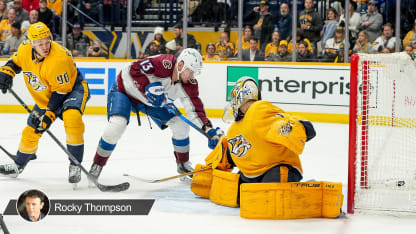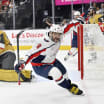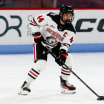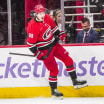Nichushkin has scored 26 points (13 goals, 13 assists) in 34 games, putting him on pace to eclipse his NHL-best 34 points (14 goals, 20 assists) in 79 games with the Dallas Stars in 2013-14. His combination of size (6-foot-4, 210 pounds), speed, improved skill and confidence has made him an offensively productive, tough player to play against. He's on the second power-play unit and is an effective penalty killer. It's no wonder he's averaging 18:00 of ice time per game this season, up almost four minutes per game from the 14:06 he averaged last season.
Certainly it's a line that makes other teams think. They have to formulate some kind of match against the top line and that often leads to more favorable matchups for the second line, which really has fueled Colorado's scoring.
A third line of Alex Newhook (5-10), J.T. Compher (6-0) and Logan O'Connor (6-0) brings energy and speed. None of the three is taller than 6-foot but each is a good skater and plays an intense game while providing some scoring.
The fourth line of Tyson Jost, Nicolas Aube-Kubel and Darren Helm is a line with speed, solid skill and an ability to manage pucks well. They make you work when they're on the ice and that complements the other lines, giving Colorado a balanced attack.
Colorado is a top-five team in most offensive categories. They are second in goals per game (3.92), fifth in shots on goal per game (35.1) and fifth in shot attempts percentage (53.4).
In particular, the Avalanche power play is formidable. It's tied with the Nashville Predators for ninth in the NHL at 23.8 percent, but that doesn't tell the whole story. Colorado leads the NHL in power-play goals (43), power-play opportunities (181) and power-play time per game (5:50).
Defensively, the Avalanche are tied with the Florida Panthers for 14th in goals against per game (2.84). It's not terrible, but something I'm sure they'd like to improve. And again, the numbers don't tell the whole story.
This area was more of a concern during the first two months of the season, when goalie Darcy Kuemper was not in top form. In 15 games through Dec. 7, Kuemper was 9-5-0 with a 2.84 goals-against average and .903 save percentage, and the Avalanche's team save percentage was .886.
Since then, however, Kuemper is 16-1-2 with a 2.21 GAA and .929 save percentage in 21 games, and Colorado's team save percentage is .907.

















